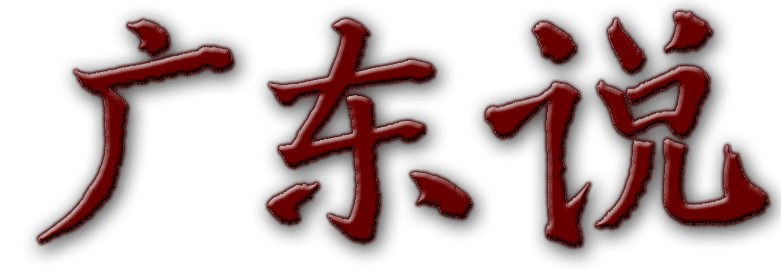|
After Shanghainese,
Cantonese is the second most widely spoken dialect. Like all the major dialects in use in China,
Cantonese is a collection of dialects spoken mainly in Southeastern parts of
Mainland China, Macau and Hong Kong. It is
also used by Chinese minorities living in Southeast Asia
and a large number of overseas Chinese originally from Cantonese origin also still
retain use of it. The term Canton came from the Romanized western name for Guangzhou. Cantonese is
understood by over 80 million Chinese speakers.
Cantonese is a completely separate language
from Mandarin. It sounds quite different from Mandarin, mainly because it has a
different set of syllables. The rules for syllable formation are different; for
example, there are syllables ending in non-nasal consonants (e.g.
"lak"). It also has a different set of tones. Mandarin is considered
to have 4 (or 5 if the light tone is considered) tones. Cantonese is generally
considered to have 6 or 7 tones, the choice depending on whether a traditional
distinction between a high-level and a high-falling tone is observed; the two
tones in question have largely merged into a single, high-level tone,
especially in Hong Kong Cantonese. Many (especially older) descriptions of the
Cantonese sound system give a somewhat higher number of tones, e.g. 10. This is
chiefly because, in these accounts, a separate tone category is assigned to
syllables ending in p, t, or k for each of the three pitch levels in which such
syllables occur. Most linguists today consider this an unnecessary
complication. Mandarin's vowel
system is somewhat more conservative than Cantonese's, in that many diphthongs preserved in Mandarin have
merged or been lost in Cantonese. Other
common characters are unique to Cantonese or deviated from their Mandarin
usage, they include: 乜, 冇, 仔, 佢, 佬, 係, 俾, 靚 etc. The
words represented by these characters are sometimes cognates with pre-existing
Chinese words. However, their colloquial Cantonese pronunciations have diverged
from formal Cantonese pronunciations.
A problem for any
student of Cantonese is the lack of a widely accepted, standardized
transcription system. Another issue is with Chinese characters: Cantonese
uses the same system of characters as Mandarin, but it often uses different
words, which have to be written with different characters. For Chinese writing
systems, there are add on’s required for Cantonese to account for the
additional words used in Cantonese. At least this is the case in Hong Kong, but
in the Canton area of mainland China,
Cantonese is written with the exact same characters as Mandarin, though the
characters stand for words not actually used in Cantonese.
Although Cantonese
is spoken broadly, most universities in the US do not and have not historically
taught Cantonese. Mandarin is offered in language classes most of the time due
to it’s status as the official dialect of both the People's Republic of China
and Taiwan. (Outside of Hong Kong, in
southern China, Cantonese is considered to be a second, “local” language used
in addition to the national language - Mandarin) Further to this, Mandarin was
the court dialect formerly used in Imperial China. However, Cantonese courses
can be found at a few US
universities. The University
of Hawaii is one example. Unusual for a
non-Mandarin language, Cantonese has its written form consisting of a number of
unique characters that cannot be found in standard written Chinese. Readers who are not familiar with Cantonese
find it’s written form odd and unintelligible.
However, written Cantonese is commonly used informally among Cantonese
speakers; through instant messaging services, advertisements and subtitles to Hong Kong movies.
Legal document records also use Cantonese now and then to be able to
exactly record a witness’ statement.
|


